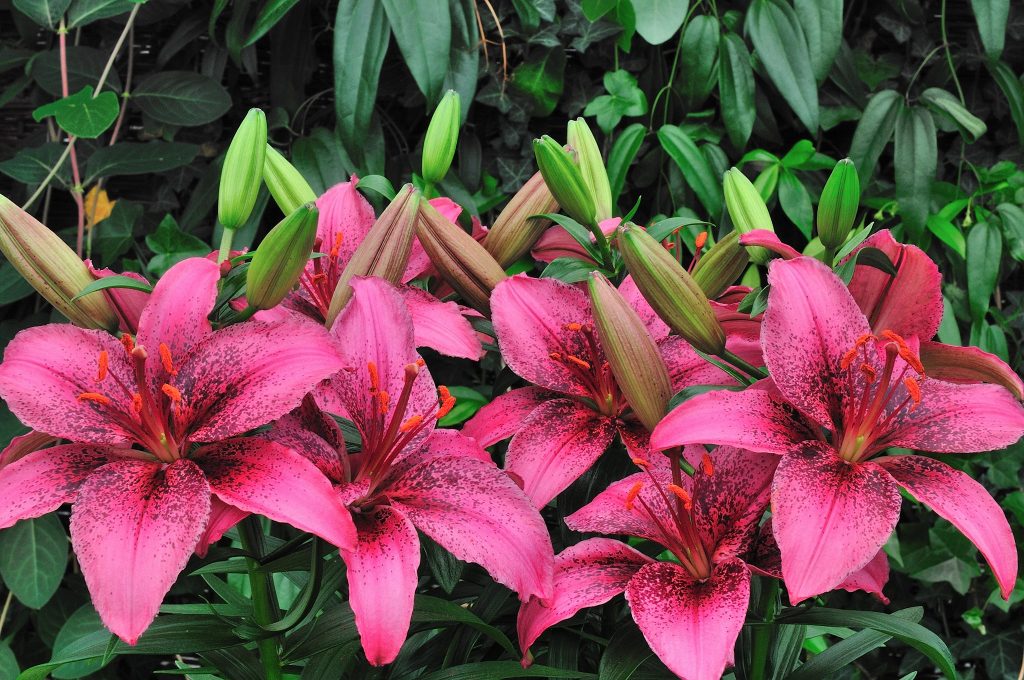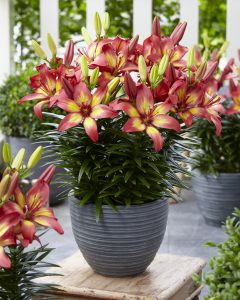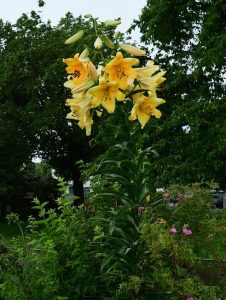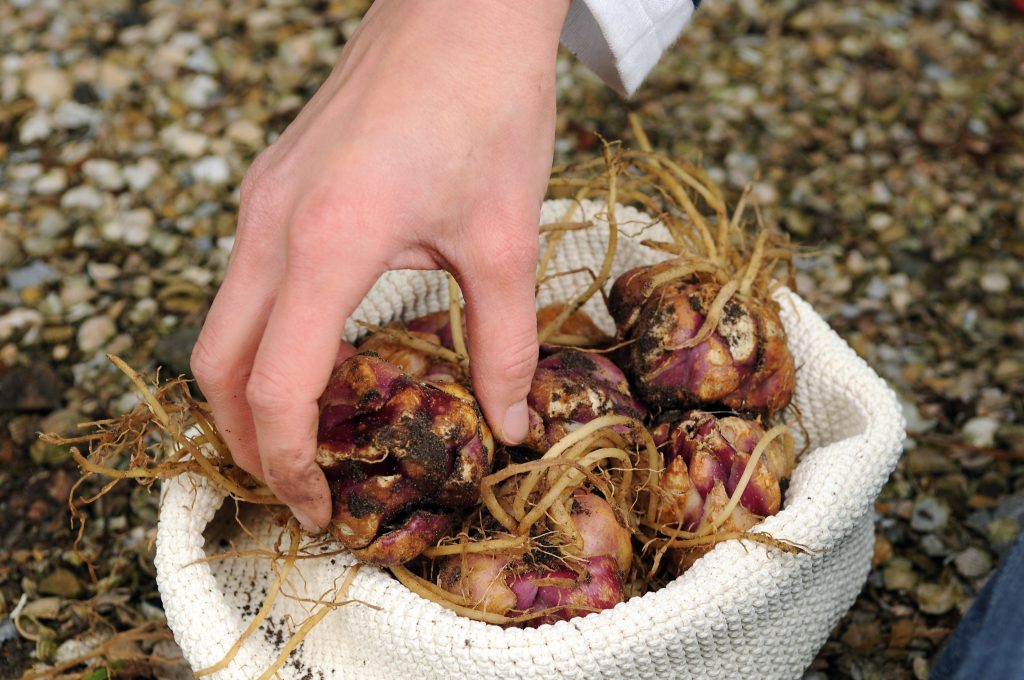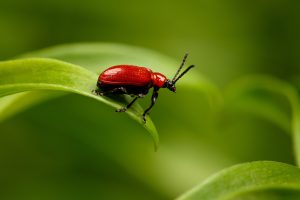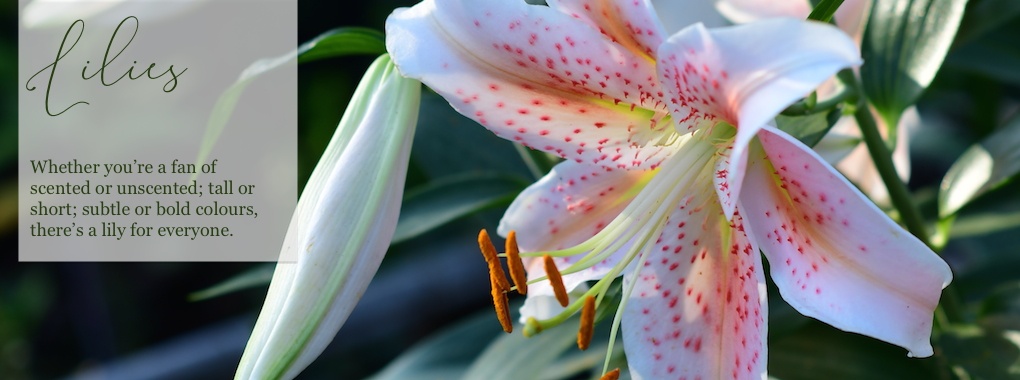
Luscious Lilies for your garden pots or borders
Whether you’re a fan of scented or unscented; tall or short; subtle or bold colours, there’s a lily for everyone. I often get asked how to choose a lily and I guess this is where I start…
Where are you thinking of planting your lilies?
Firstly, where would you like to grow your lilies? Pots or garden borders? If you’re planning on planting up your lily bulbs in pots for your patio (or making a pot feature around your garden), then the world is your oyster when it comes to lily choice. This is because different lilies like different soil types. Therefore, you can choose any lily and just mix up the right soil/compost for it. Lilies are generally happy in a good-quality, peat-free, multi-purpose compost. This leads me to the next question…
Scented or unscented Lilies?
Do you prefer to have the gorgeous scent filling your garden in the summer months or are you just hooked on having a garden bursting with vibrant colour? These are the two clear differentiators in my mind. So, if you’re the latter then the unscented Asiatic lilies are the clear winners when it comes to bold and beautiful colour. Asiatics vary from bright yellows and oranges to the deepest dark reds as well as two-toned lilies. But if it’s the perfume you just can’t resist, then the Oriental lilies and Roselilies are your best pick. Oriental lilies come in a palette of pinks, whites and even yellows. Some are amazingly decorative too.
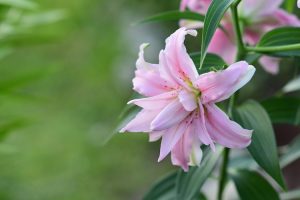
Tall or short Lilies?
If you’re happy to have either colour or scent, then you may want to ask yourself how tall you would you like your lilies to be? There’s short varieties (known as Pot lilies or Dwarf lilies) in both Asiatic or Oriental, and you can even produce a spectacular display of Tree-like lilies which can reach up to an impressive height of 7ft.
Do you know your soil type?
When it comes to planting your lilies in your garden borders, you will need to know which soil type you have as this will affect the growth of the lilies. The one key rule for where ever you are growing lilies is well-drained soil. They must have plenty of drainage to avoid the bulbs from rotting. Asiatic lilies prefer an alkaline soil and Orientals an acidic soil. If you are unsure of your soil type, then we would advise planting in pots or opting for any of the hybrid lilies like the Oriental trumpets (tree-like lilies), Longiflorum Asiatics or Longiflorum Orientals. All of which are equally gorgeous and happy in any well-drained soil!
Helpful tips on growing lilies
Planting your lilies couldn’t be easier once you have chosen the right soil for the variety.
Simply plant with the growing tip pointing upwards and the roots below and cover the top of the bulb with 4-6” (10-15cm) of soil.
If planting in pots, plant 3 bulbs in a 10-14” (25-35cm) ‘patio type’ pot. You can plant more in a larger pot or less in a smaller pot. It really depends on the display you would like to achieve. You can also stagger the planting, using different lilies to achieve different heights.
-
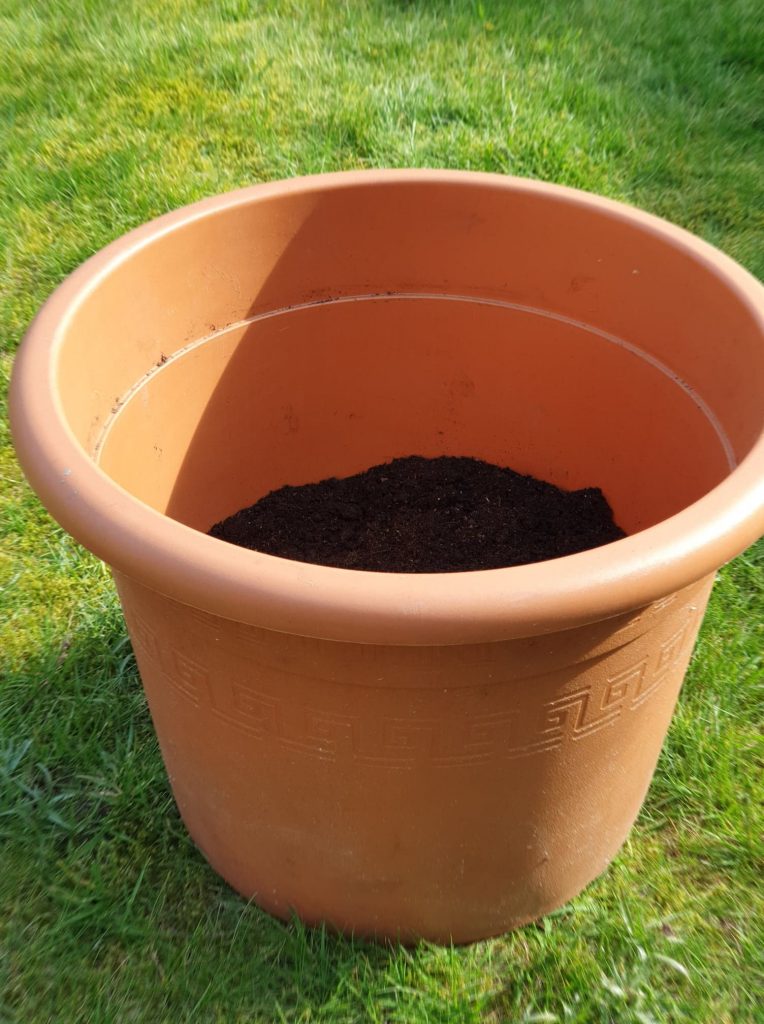
Ensure adequate drainage in pots -
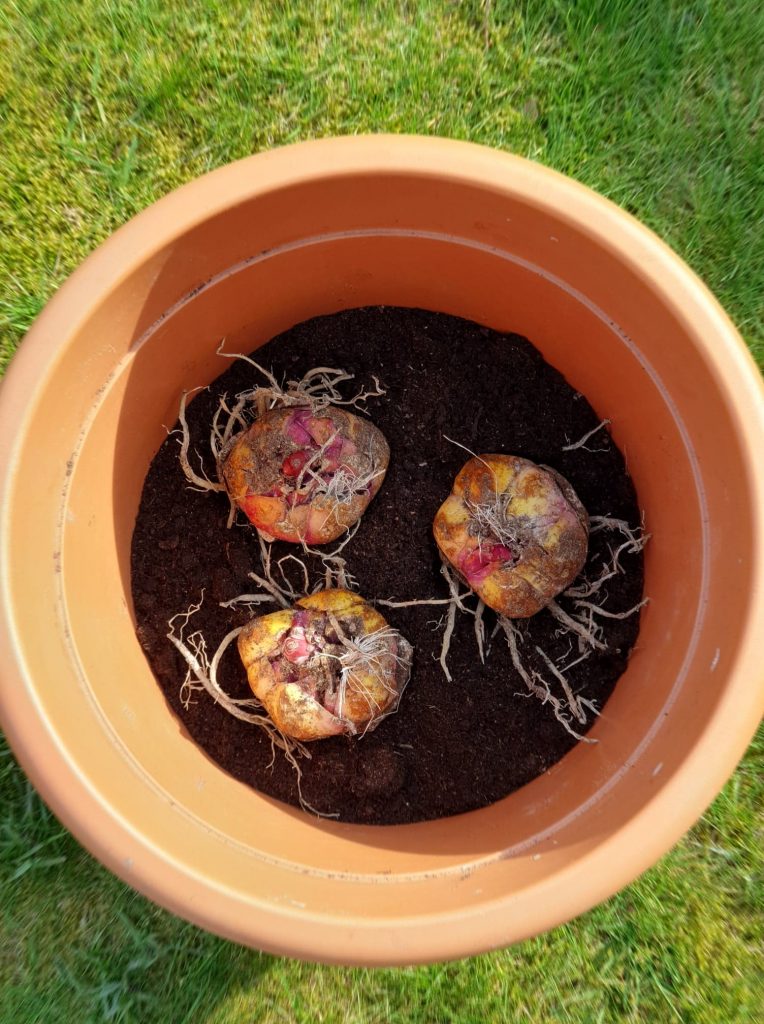
Plant roots down, pointy end up -
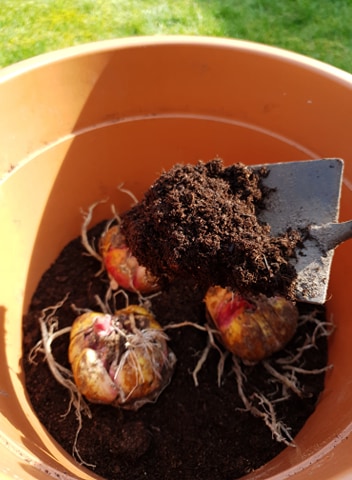
Cover with at least 4-6″ of soil -
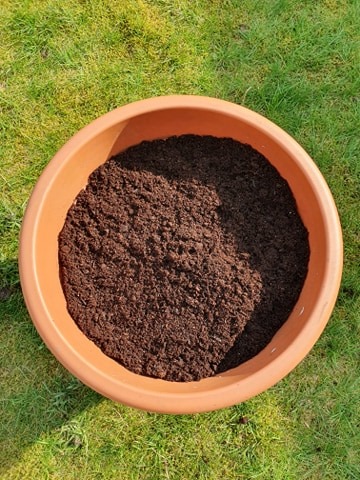
Fill soil to the top of pot
Lilies can tolerate very cold conditions but they do not like to get wet.
Most lilies prefer to be planted in a location with at least half a day’s full sunshine, if it’s a bit too shady they will lean their stems towards the sun. Unless you have Martagon lilies, as these actually like their head in the sun but feet in the shade.
Lilies are generally happy in a good-quality, peat-free, multi-purpose compost.
When the Lily has finished flowering, cut any seed heads back and allow the foliage to die back naturally. Do not be tempted to cut the stem back until stems become hollow and brown.
Believe it or not, lilies like a cold-dormant phase and like to be left where they are during winter, just ensure there is adequate drainage so they can’t get waterlogged. Lilies are very hardy and can tolerate up to -20°c.
Many people have lilies for a cut flower garden, if you do wish to cut lilies for indoor arrangements, then ensure to leave 50cm of stem to allow for another season of flower the following year.
To prevent Lily Beetles from damaging your lilies, we recommend using the Lily Beetle Prevention Spray or you can make up your own with the Concentrate. This Spray (Grazers G4) will also stimulate growth of your lilies.
You can feed your lilies with a Tomato Feed to stimulate and strengthen your lilies when you start to see signs of growth. Make up your tomato feed with half the recommended dilution (written on the instructions on the bottle) and feed once every 3 weeks.
FAQ on growing lilies
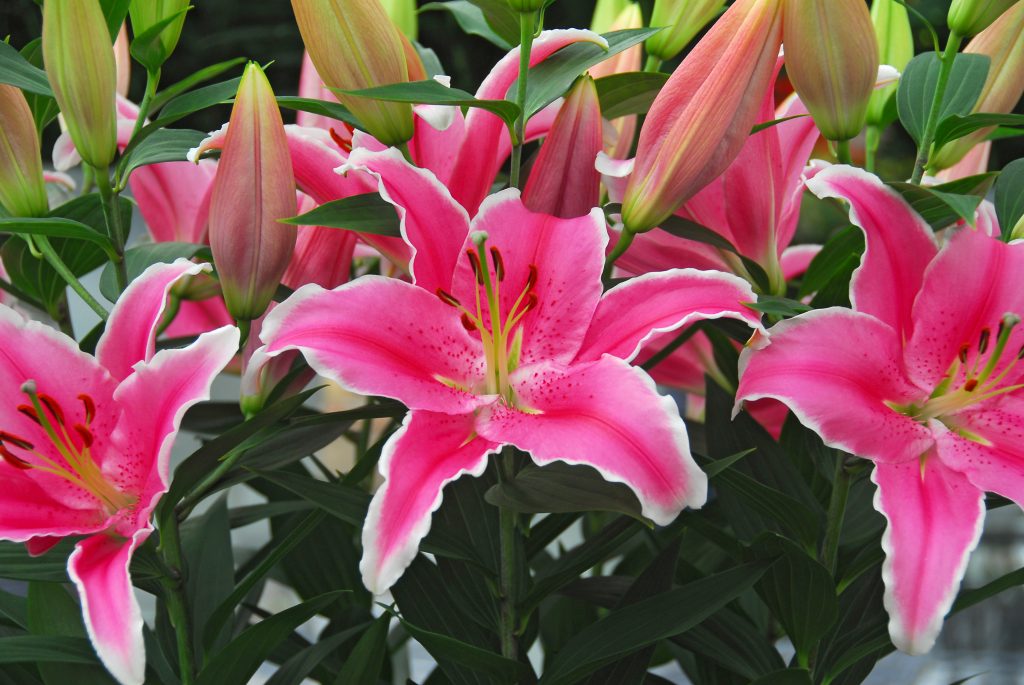
How do I plant my lily bulbs?
Lilies are very hardy bulbs. They can tolerate very cold conditions but do not like to get wet. If planting in borders the soil must be free draining and preferably humus rich. Some lilies prefer acid soil, mainly Oriental lilies, and some prefer alkaline mainly Asiatic lilies. It is best to check which soil you have. When planting in pots or tubs you must make sure that they are kept moist but do not get waterlogged. Plant bulbs with 4-6″ (10-15cm) of soil above them. If planting in pots, plant 3 in a 10-14″ (25-35cm) pot, in a good-quality, peat-free, multi-purpose compost.. John Innes No.3 is ideal for Lilies also. If it appears too dense, add some horticultural grit to improve drainage.
Some lilies are lime-haters (e.g. L. Auratum and L. Speciosum), and should be potted into pure ericaceous compost. John Innes ericaceous compost is recommended.
Lilies are heavy feeders, so add granules of a controlled-release fertiliser when planting.
You can find planting instructions for every variety of flowering bulbs at the bottom of every product page on our website.
Do I need to feed my lilies?
If you want to feed your lilies then a slow release fertilizer is best. Also a general tomato feed has shown to be beneficial for lily growth, use 1/2 the dilution recommended on the bottle. Or use the Lily Beetle Prevention Spray which has great results for strengthening and stimulating lily growth.
How do I get rid of the Lily Beetle?
We recommend using the Lily Beetle Prevention Spray. The key is to be vigilant and keep checking your foliage each day when you can.
Do Lilies multiply?
Lilies do multiply but if in containers will need lifting every 2 or 3 years as they will become pot bound. Lift the bulbs out of the soil and carefully pull off any attached bulblets. Replant the original bulbs. You can also plant the bulblets, but bare in mind these will take a couple of years to become established.
Are Lilies poisonous to cats and dogs?
Lilies are toxic to cats and dogs if consumed (like a lot of plants). Lilies should be kept out of reach of small children as well. Lily pollen is poisonous to cats and dogs but it has to be ingested. Cats/dogs are very clever animals and will very rarely eat anything they are unsure about. There are also numerous lilies now that are pollen free including our Roselilies and Double Oriental Lilies. If you’re worried then just nip the stamen out of the lily as it opens and avoid placing them where pets can brush past the stamen and get it on their fur.
Do I lift my Lily bulbs over winter?
Lilies do not like to be dried out, they must be kept in soil at all times. Lilies, in fact, like a cold dormant phase and are happy to stay out in the winter. If you are worried about leaving them out in the borders over winter, lift them and store them in peat until replanting the following spring. A good tip is to tilt your pots on their sides over winter, lifting them upright again in the spring, preventing them becoming waterlogged.
